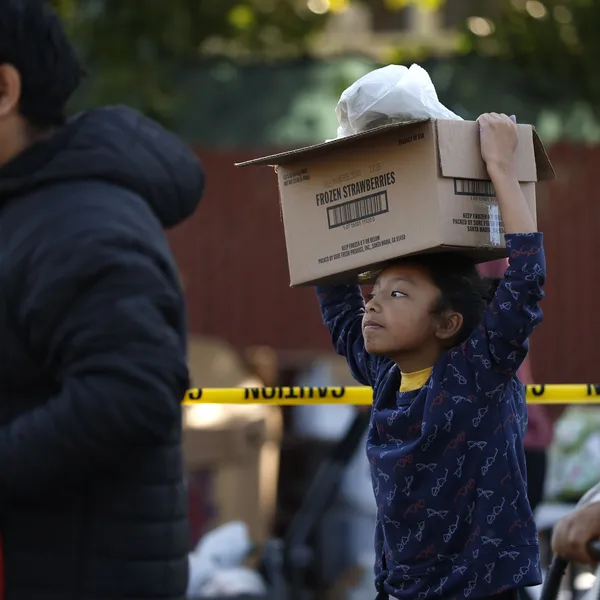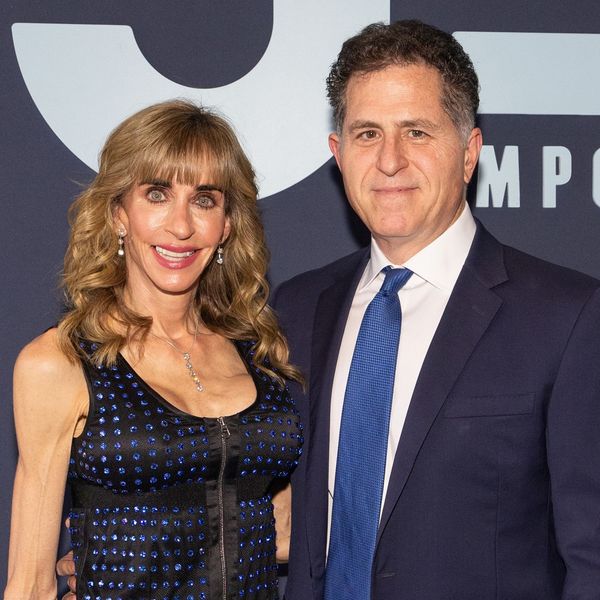Three weeks ago, I sat in a cramped conference room in the large public high school where I teach in Beaverton, Oregon. I was listening to the principal deliver a scripted PowerPoint presentation on the $35-million-dollar budget deficit our district faces in the upcoming school year.
Teachers and staff members slumped in chairs. A thick funk of disappointment, resignation, hopelessness, and simmering anger clung to us. After all, we've been here before. We know the drill: expect layoffs, ballooning class sizes, diminished instructional time, and not enough resources. Accept that the teacher-student relationship--one that has the potential to be productive and sometimes even transformative--will become, at best, transactional. Bodies will be crammed into too-small spaces, resources will dwindle, and learning will suffer. These budgetary crises are by now cyclical and completely familiar. Yet the thought of weathering another of them is devastating.
This is the third time in my 14-year-career as a visual arts teacher that we've faced the upheaval, disruption, and chaos of just such a budget crisis. In 2012, the district experienced a massive shortfall that resulted in the firing of 344 teachers and bloated class sizes for those of us who were left. At one point, my Drawing I classroom studio--built to fit a maximum of 35 students--had more than 50 of them stuffed into it. We didn't have enough chairs, tables, or spaces to draw, so we worked in the halls.
During that semester I taught six separate classes and was responsible for more than 250 students. Despite the pretense that real instruction was taking place, teachers like me were largely engaged in crowd management and little more. All of the meaningful parts of the job--connecting with students, providing one-on-one support, helping struggling class members to make social and intellectual breakthroughs, not to speak of creating a healthy classroom community-- simply fell by the wayside.
I couldn't remember my students' names, was unable to keep up with the usual grading and assessments we're supposed to do, and was overwhelmed by stress and anxiety. Worst of all, I was unable to provide the emotional support I normally try to give my students. I couldn't listen because there wasn't time.
On the drive to work, I was paralyzed by dread; on the drive home, cowed by feelings of failure. The experience of that year was demoralizing and humiliating. My love for my students, my passion for the subjects I teach, and ultimately my professional identity were all stripped from me. And what was lost for the students? Quality instruction and adult mentorship, as well as access to vital resources -- not to mention a loss of faith in one of America's supposedly bedrock institutions, the public school.
And keep in mind that what's happening in my school and in Oregon's schools more generally is anything but unique. According to the American Federation of Teachers, divestment in education is occurring in every single state in the nation, with 25 states spending less on education than they did before the recession of 2008. The refusal of individual states to prioritize spending on education coupled with the Trump administration's proposed $7 billion in cuts to the Department of Education are already beginning to make the situation in our nation's public schools untenable--for both students and teachers.
Sitting in that conference room, listening to my capable and dedicated boss describe our potential return to a distorted reality I remembered well made me recoil. Bracing myself for the soul-crushing grind of trying to convince students to buy into a system that will almost by definition fail to address, no less meet, their needs--to get them to show up each day even though there aren't enough seats, supplies, or teachers to do the job -- is an exercise in futility.
The truth of the matter is that a society that refuses to adequately invest in the education of its children is refusing to invest in the future. Think of it as nihilism on a grand scale.
Teachers as First Responders
Schools are loud, vital, chaotic places, unlike any other public space in America. Comprehensive public high schools reflect the socioeconomic, racial, religious, and cultural makeup of the population they serve. Each school has its own particular culture and ecosystem of rules, structures, core beliefs, and values. Each also has its own set of problems, specific to the population that walks through its doors each day. Coping with the complexity and magnitude of those problems makes the job of creating a thriving, equitable, and productive space for learning something akin to magical thinking.
The reflexive blame now regularly heaped on schools, teachers, and students in this country is a misrepresentation of reality. The real reason we are being left behind our global peers when it comes to student achievement has to do with so much more than the failure to perform well on standardized tests. Our kids are struggling not because we've forgotten how to teach them or they've forgotten how to learn, but because the adults who run this society have largely decided that their collective future is not a priority. In reality, the tattered and rapidly deteriorating infrastructure of our national system of social services leaves schools and teachers as front-line first responders in what I'd call a national crisis of the soul.
So it's no surprise to me that teachers, even in the reddest of states, have been walking out of their classrooms and demanding change. Such walkouts in Arizona, California, Colorado, Kentucky, North Carolina, Oklahoma, Washington, and West Virginia have reflected grievances more all-encompassing than the pleas for higher pay that have made the headlines. (And in so many states, they are still being paid less than a living wage.) Demands for just compensation are symbolic and easy for the public to grasp. The higher pay won through some of those walkouts represents an acknowledgement that teachers are being asked to do a seemingly impossible job in a society whose priorities are increasingly out of whack, amid the crumbling infrastructure of the public-school system itself.
The idea that the real world is somehow separate from the world inside our schools and that issues of inequality, poverty, mental health, addiction, and racism won't impact the capacity of our students to thrive academically sets a dangerous precedent for measuring success. Assuming that the student living in a car, not a home, should be able to stay awake during a lecture, that the one returning from a week in a psychiatric ward should be able to instantly tackle a difficult math test, and that the one whose undocumented father was just picked up by Immigration and Customs Enforcement officers should have no problem concentrating as her teacher diagrams sentences in English is a grand delusion.
In fact, among the many demands of teachers and their unions during the strikes of the past year were calls for more financial support for comprehensive social services for students. In Los Angeles, teachers fought for legal support for students in danger of deportation. In North Carolina, teachers are planning a new round of strikes that will, among other things, demand Medicaid coverage expansion aimed at improving student health. In Chicago, teachers included a call for affordable housing in their negotiations and so drew attention to the importance of supporting students both in and out of the classroom.
If schools are expected to pick up the slack for the gaping holes in our social safety net, it follows that they should be designed and funded with that purpose in mind. If teachers are supposed not only to teach but to act as counselors, therapists, and social workers, they should be paid salaries that reflect such weighty demands and should have access to resources that support such work.
Why Prioritizing School Funding Matters
There is a large disconnect between the lip service paid to supporting public schools and teachers and a visible reticence to adequately fund them. Ask almost anyone -- save Secretary of Education Betsy DeVos -- if they support teachers and schools and the answer is probably "yes." Bring up the question of how to actually provide adequate financial support for education, however, and you'll quickly find yourself mired in arguments about wasteful school spending, pension funds that drain resources, sub-par teachers, and bureaucratic bloat, as well as claims that you can't just continue to throw money at a problem, that money is not the solution.
I'd argue that money certainly is part of the solution. In a capitalist society, money represents value and power. In America, when you put money into something, you give it meaning. Students are more than capable of grasping that when school funding is being cut, it's because we as a society have decided that investing in public education doesn't carry enough value or meaning.
The prioritization of spending on the military, as well as the emphasis of the Trump administration and congressional Republicans on a staggering tax cut for the rich, corporate tax evasion, and the dismantling of what's left of the social safety net couldn't send a louder message about how much of a priority the wellbeing of the majority of this nation's kids actually is. The 2019 federal budget invested $716 billion in national security, $686 billion of which has been earmarked for the Department of Defense (with even more staggering figures expected next year). Compare that to the $59.9 billion in discretionary appropriations for the Department of Education and the expected future cuts to its budget. Point made, no?
However, since federal school contributions add up to only a small percentage of local and state education budgets, all blame can't go there. In Oregon, for instance, restrictions placed on property taxes in the 1990s artificially limited such revenue, forcing the state to start relying heavily on income taxes to keep schools afloat. Corporations are an important source of income for states. Yet, though corporate profits in the U.S. rose by $69.3 billion to an all-time high of more than two trillion dollars in the third quarter of 2018, over the last 40 years the states' share of income-tax revenue has fallen to half what it was in the 1970s.
Take Nike, whose worldwide headquarters are located only a few miles from the high school where I teach. It stands as a shining example of a corporation that has profited handsomely from sheltering income abroad while evading local tax responsibilities. Nike has a special relationship with the state of Oregon, which taxes only the company's local profits, not those earned elsewhere. Adding insult to injury, according to The Oregonian, by the end of 2017, Nike had put $12.2 billion of its earnings into offshore tax shelters. Had that money been repatriated, the company could have owed up to $4.1 billion in U.S. taxes, which means it has a modest hand in the monetary shortfalls that leave schools like mine in desperate straits.
In reality, Oregon's economy is thriving and yet how little it all matters, since here we are again on the precipice of another crisis.
In 1999, the state government formed a committee made up of educators, legislators, business leaders, and parents to create a reliable budgetary tool that would correlate school funding needs with student performance. This "Quality Education Model" set out a standard for what a "quality" education would look like for every student in Oregon. In the 20 years since then, the state legislature has reliably failed to meet the funding goals set out by that model. This year, it calls for $10.7 billion in education spending, while the state legislature's joint ways and means committee recently released a budget that included spending of just $8.87 billion on the school system. Such annual shortages of funds have, over time, helped create the present gaping hole in our public education system. And each year that hole grows larger.
Restoring Faith in Our Nation's Institutions
Public schools represent one of the bedrock institutions of American democracy. Yet as a society we've stood aside as the very institutions that actually made America great were gutted and undermined by short-term thinking, corporate greed, and unconscionable disrespect for our collective future.
The truth is that there is money for education, for schools, for teachers, and for students. We just don't choose to prioritize education spending and so send a loud-and-clear message to students that education doesn't truly matter. And when you essentially defund education for more than 40 years, you leave kids with ever less faith in American institutions, which is a genuine tragedy.
On May 8th, educators across the state of Oregon are planning to walk out of schools. The action, a precursor to a strike, is a direct response to the inadequate funding in the upcoming state budget and a referendum on the continuing divestment in public education. Teachers like me will be stepping out of our classrooms not because we don't want to teach, but because we do.





